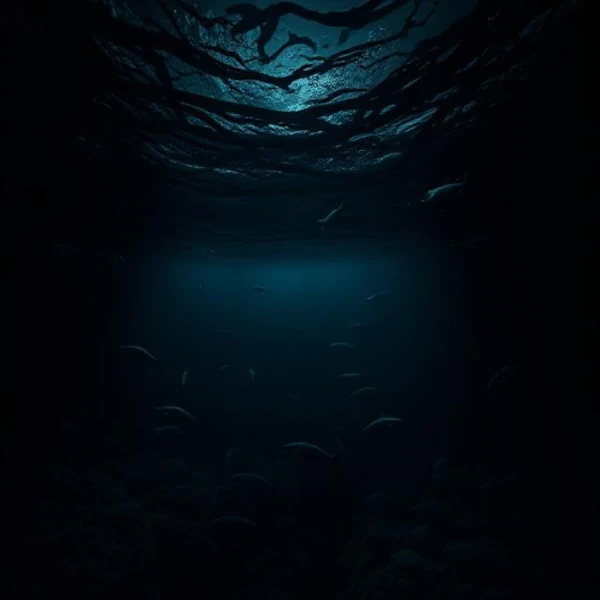
Ocean trenches represent the most extreme environments on our planet. These geological formations, mainly located along continental margins and subduction zones, plunge to abyssal depths exceeding 6,000 meters, with some reaching over 11,000 meters below the ocean surface. These regions, known as the "hadal zone" in reference to Hades, the Greek god of the underworld, remain among the least explored on Earth due to the hostile conditions that prevail there: total darkness, crushing pressure, and freezing temperatures.
N.B.:
The hadal zone (from 6,000 to 11,000 meters deep) takes its name from Hades, the god of the underworld in Greek mythology. It represents less than 0.2% of the ocean floor's surface but is home to unique ecosystems adapted to pressures that can exceed 1,100 atmospheres.
Ocean trenches mainly form at convergent tectonic plate boundaries, where one oceanic plate dives beneath another (a process called subduction). This creates a linear, elongated depression in the ocean floor. The depth of a trench is directly correlated with the age of the subducting plate: the older and colder the plate, the higher its density and the deeper it sinks into the Earth's mantle.
Our planet has several dozen ocean trenches, but only a handful exceed 10,000 meters in depth. These abyssal formations host unique ecosystems adapted to extreme conditions, with specialized organisms possessing remarkable biological mechanisms to withstand pressures that can exceed 1,000 atmospheres.
| Trench Name | Ocean | Maximum Depth (m) | Location |
|---|---|---|---|
| Mariana Trench | Pacific | 10,984 ± 25 | Near the Mariana Islands |
| Tonga Trench | Pacific | 10,882 | South Pacific Ocean |
| Philippine Trench | Pacific | 10,545 | East of the Philippines |
| Kuril-Kamchatka Trench | Pacific | 10,542 | Near the Kuril Islands |
| Izu-Bonin Trench | Pacific | 9,810 | Japan |
| Puerto Rico Trench | Atlantic | 8,376 | Caribbean Sea |
| Sunda Trench | Indian | 7,725 | Eastern Indian Ocean |
| South Sandwich Trench | Atlantic | 7,235 | South Atlantic |
| Peru-Chile Trench | Pacific | 6,369 | West coast of South America |
| Celebes Trench | Pacific | 6,200 | Celebes Sea |
Imagine a world plunged into permanent darkness, where the temperature hovers near freezing and the pressure is so intense it could crush most submersibles. This is the daily reality for creatures in the abyssal trenches. Yet, against all odds, life thrives there!
To survive in these extreme pressure conditions (more than 1,000 times the atmospheric pressure we know), fish and crustaceans have developed invisible superpowers. Their secret? Their molecules are different. Their proteins and cell membranes are more flexible, as if lubricated from within, preventing them from breaking under the colossal weight of the water.
Another survival trick: many of these animals naturally produce a substance called TMAO. Think of it as an ultra-powerful antifreeze and cell protector. The deeper a fish lives, the more its body contains this miracle substance, which stabilizes its proteins and prevents it from being literally compressed.
In these nutrient deserts, food is scarce. Most deep-sea inhabitants are scavengers, patiently waiting for organic debris ("marine snow") to fall from the surface, sometimes after a journey of several kilometers. Others, like giant tube worms, live in symbiosis with bacteria that convert toxic minerals from hydrothermal vents into energy, creating oases of life far from sunlight.
N.B.:
TMAO (trimethylamine oxide) is a small organic molecule that acts as a "molecular protector" in abyssal fish. It binds to proteins and prevents extreme pressure from deforming them, much like a rigid case protects a delicate instrument. Its concentration in tissues increases proportionally with the animal's living depth.